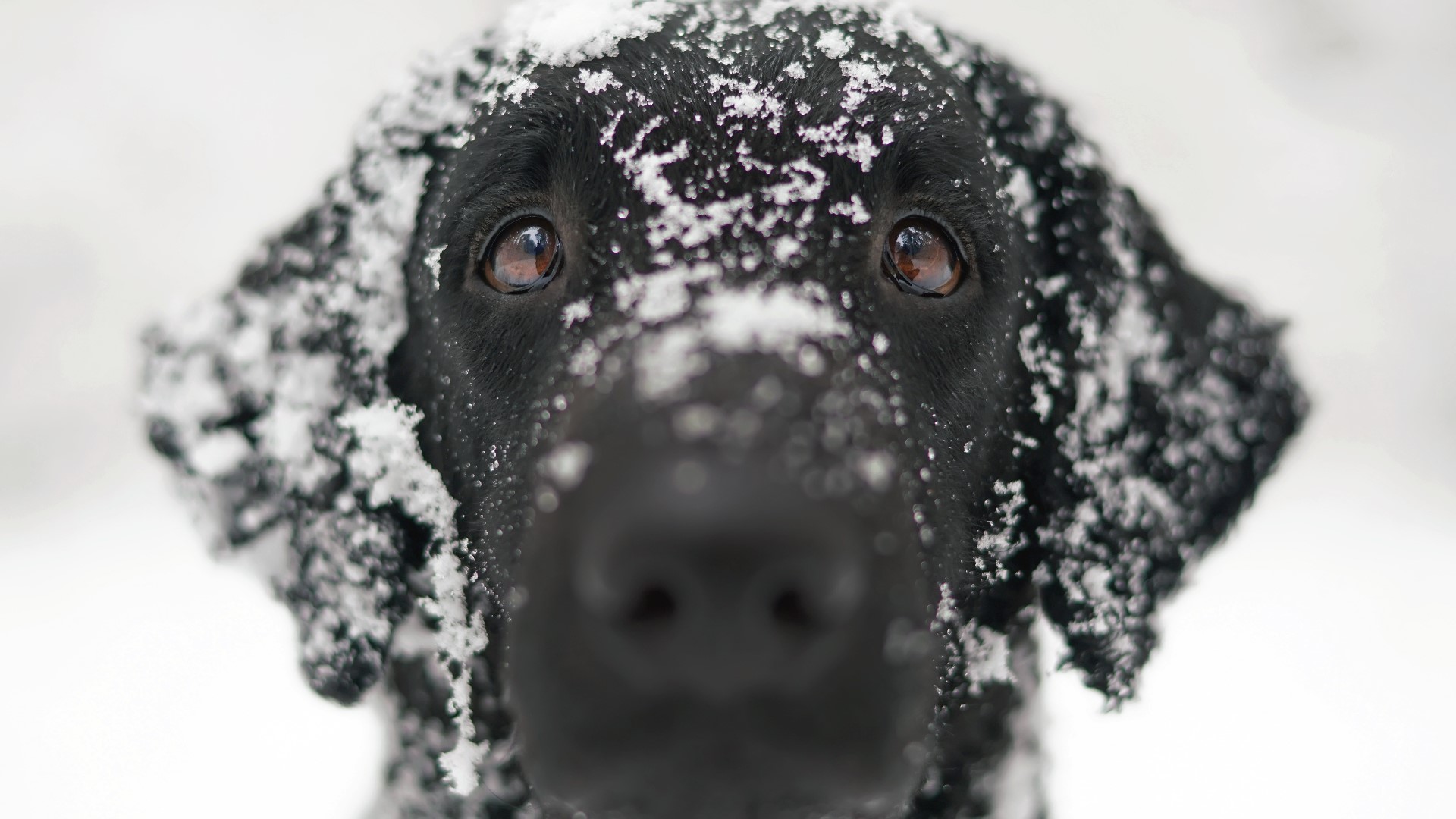IOWA, USA — Much of Iowa is currently in a Blizzard Warning with a combination of heavy snow and wind leading to dangerous travel conditions.
Snow is still falling as of Friday afternoon, with many areas having received at least 5" of snow but more falling in the next few hours.
Regardless, the powerful wind will make it difficult to get accurate snow measurements.
Since the bitter cold can be life-threatening for pets, it's important to know how to best take care of your furry friends.
Keeping your pets safe in the cold
The Animal Rescue League of Iowa is offering 11 important safety tips for pets during the cold winter weather. Des Moines residents can report an animal in distress by calling 515-283-4811.
- Know how much cold your pet can tolerate. Puppies, small dogs and older dogs have a lower tolerance for cold temperatures. Let them outside only to relieve themselves, or you may choose to train them to use paper pads indoors.
- Extra care for cold-weather dogs. If your dog is built for colder weather and enjoys playing in the cold, increase the amount of food he is given, especially extra protein, to keep them and his fur healthy and in good shape.
- Provide a warm place to sleep. Make sure your pet has a warm place to sleep indoors, off the floor and away from drafts. A warm blanket or pet bed will be much appreciated by your companion! The ARL strongly recommends that outdoor dogs be brought indoors during cold snaps. If your dog absolutely must stay outside, make sure he has adequate shelter and fresh, unfrozen water. Your dog’s shelter needs to keep them warm, with dry bedding such as straw (avoid using blankets or hay, as they can collect water and freeze) and protection from the wind. Dogs who are aging, undernourished or have medical conditions should not be out in the cold even with a doghouse.
- Indoor cats. Keep indoor cats inside. They can get lost in wintery weather and become injured or worse. They also have a higher risk of exposure to diseases from other animals they may encounter.
- Community Cats. If you are caring for outdoor community cats, provide them with a warm place to sleep, access to unfrozen water and nutritious food. Always use dry bedding, such as straw, in their shelter (avoid using blankets or hay, as they can absorb moisture and freeze).
- Keep your dogs on-leash. Dogs that are let off-leash during the winter, especially during a snowstorm, have a higher chance of becoming lost. Make sure your dog is wearing ID tags and has been microchipped to increase the chances of being reunited with you if he becomes lost.
- Clean your pet when coming inside. Towel dry your dog’s paws, legs and stomach when he comes in out of winter weather. Chemical agents used to melt ice can be dangerous for your dog to ingest while licking his paws. Snow and encrusted ice may also cause your dog’s paw pads to bleed.
- Check twice before starting your car. Outdoor cats often climb under the hoods of cars to keep warm. When the motor starts, the cat may be injured or killed by the fan belt. Knock or bang loudly on the hood of your car before starting it to give cats a chance to escape.
- Never leave your pet in a vehicle in cold weather. The vehicle acts as a refrigerator, keeping the cold in and causing the animal to freeze.
- Antifreeze may be good for your car, but it is lethal for dogs and cats. Clean up any spills thoroughly and consider using products that contain propylene glycol rather than ethylene glycol.
- Never shave your dog to the skin in the winter. Dogs need their coat to provide warmth. When you give your dog a bath in the winter, be sure he is thoroughly dry before letting them outside. For dogs with shorter coats, consider getting a coat or sweater that covers his body from the base of the tail to the belly. Keep pets’ fur mat free. Mats do not allow the pet’s coat to keep the animal warm.

